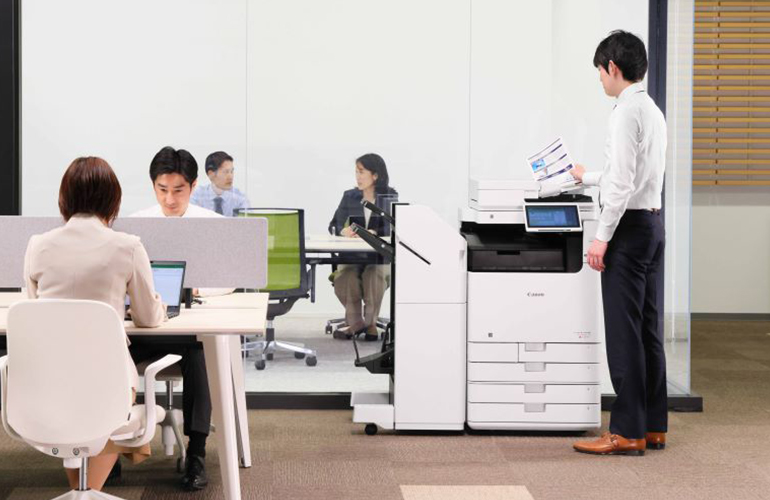What is Digital Platform?
Our Digital Platform is a technological platform that create environments where customers can safely and securely use Canon products and services while connected to the cloud or other virtual spaces. The platform also includes technologies that ensure the stable operation of products.
Most of the value of products used to be built into the hardware. However, in recent years, most products have been connected to a network. There is a growing demand for systems that increase products' added value by linking them with the cloud, such as various functions and services using cloud and digital technologies, and data analysis solutions.
Through the development of cameras, office multifunction devices, and other products, Canon has developed Digital Platform technologies that link hardware with cyberspace. A specific example is the development of a data solutions platform that collects and analyzes massive amounts of operational data from printers, semiconductor lithography equipment, and other devices and uses this data to extend services to customers. Another example is a secure connected platform that links devices to the cloud quickly, simply, stably, and securely. These platforms are used in a broad range of Canon products and services.

Application case study:
Video compression technologies, a key part of our Digital Platform, adopted in international standards
Video file size viewed around the world is getting larger as the quality of videos improves each year. To combat this, Canon is developing technologies to compress the data size of videos, which account for the majority of internet traffic.
“Quantization matrix” is a common technique to reduce video data size. It is used to adjust the image quality and file size when compressing video and remove unimportant visual information in each video frame. Canon saw that the quantization matrix itself had to be compressed even further. To this end, we developed a new compression technology that scans data along with the diagonal lines from the bottom left to the top right, in contrast to the conventional method that scans data in a zigzag manner. In this way, our technology has successfully further reduced video data size.
The engineers across Canon Group worked on various video compression technologies in parallel, including this technology. Many of such technologies were adopted into the international High Efficiency Video Coding (HEVC) standard. The HEVC standard is used in not just Canon products but also billions of smartphones and other products worldwide. As a result, our licensing income is rising every year.
Canon engineers in Japan, France, and Australia work together to gather information and leverage each country and region’s advantages to develop the technological areas where they each excel in parallel. This combined effort has resulted in the registration of numerous patents. The Versatile Video Coding (VVC) standard, the successor to HEVC, also incorporates many Canon technologies. In this way, we are steadily working toward developing the next generation of standards.

Related Links
R&D introduction PDF "THE CANON FRONTIER"
Technology


